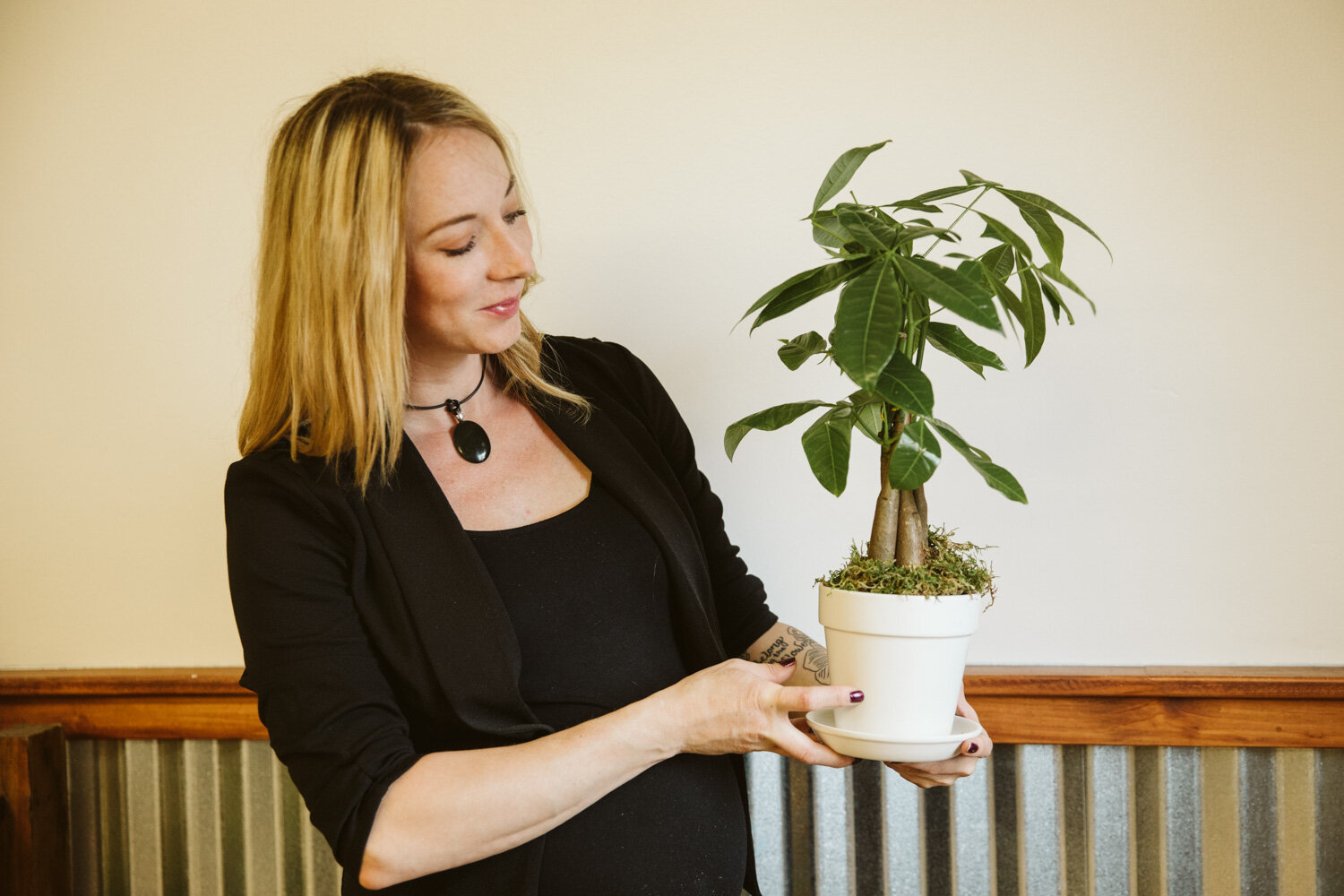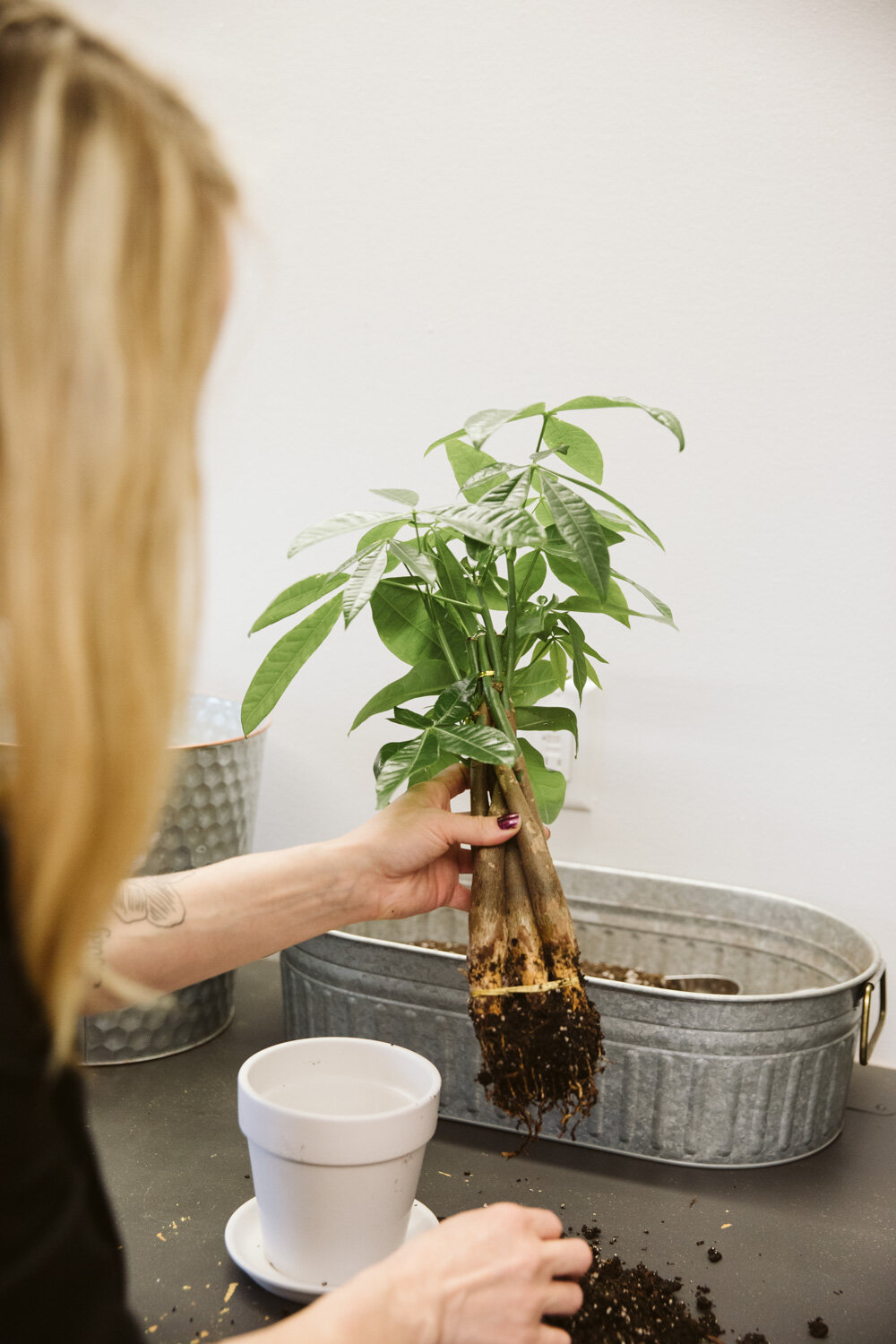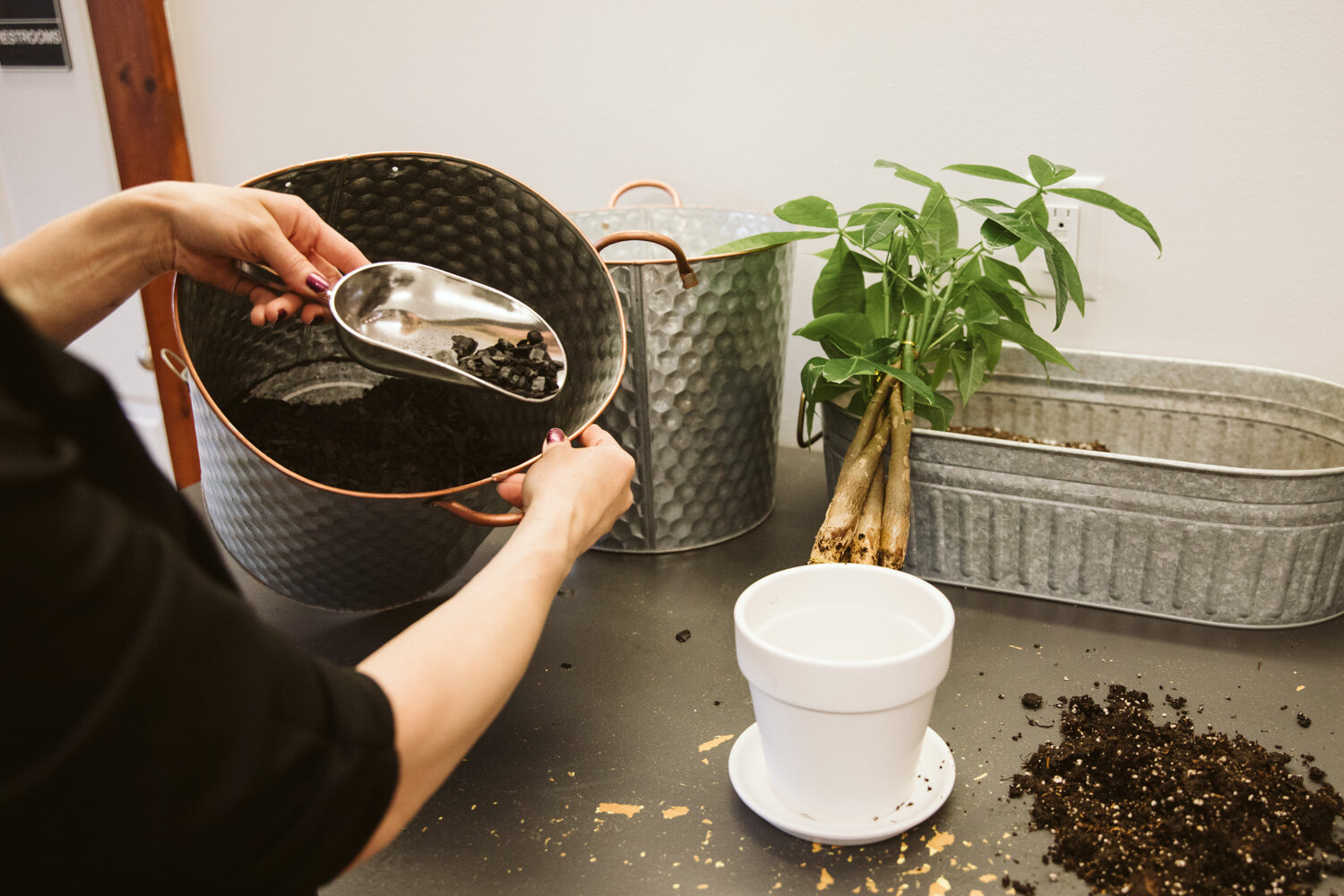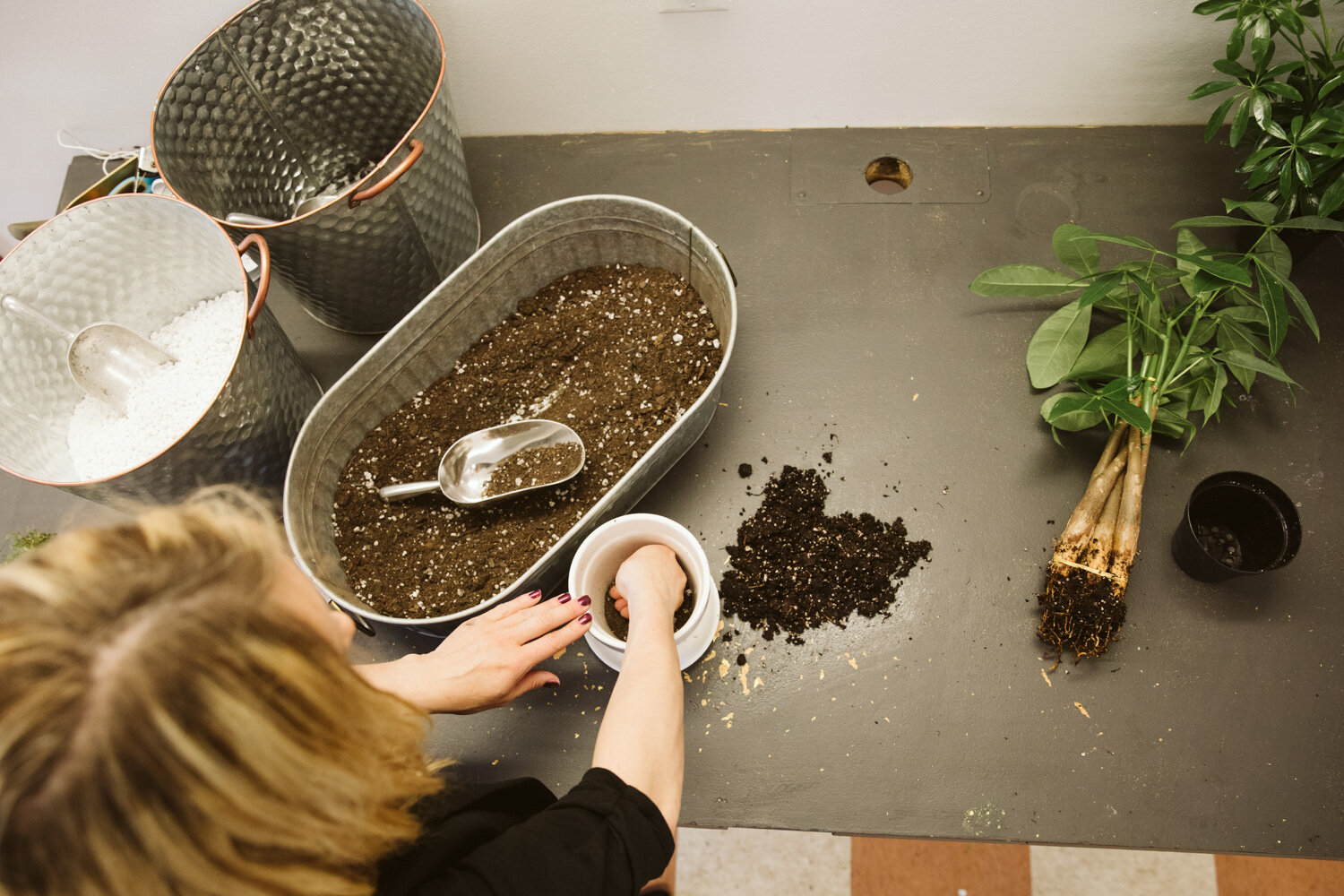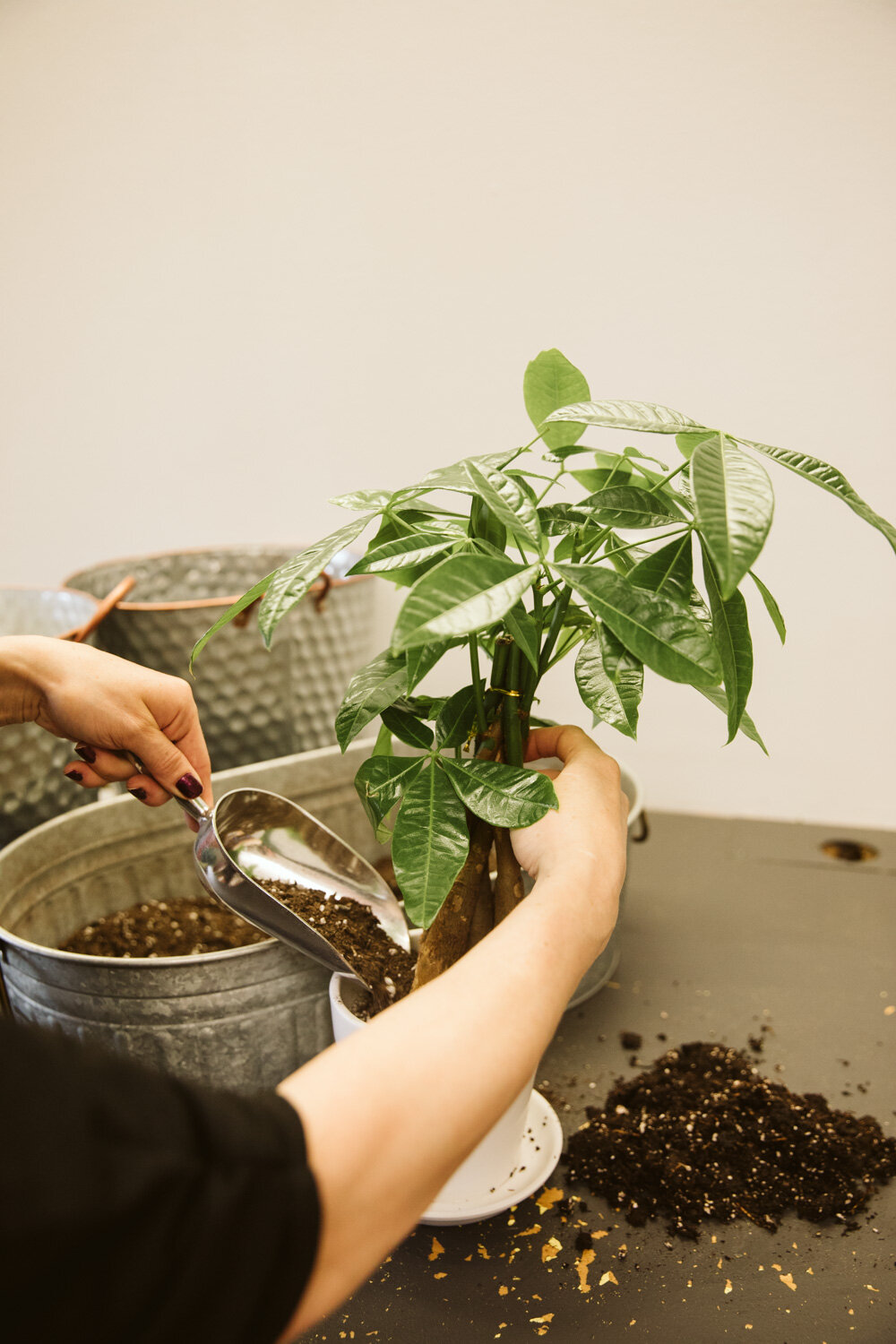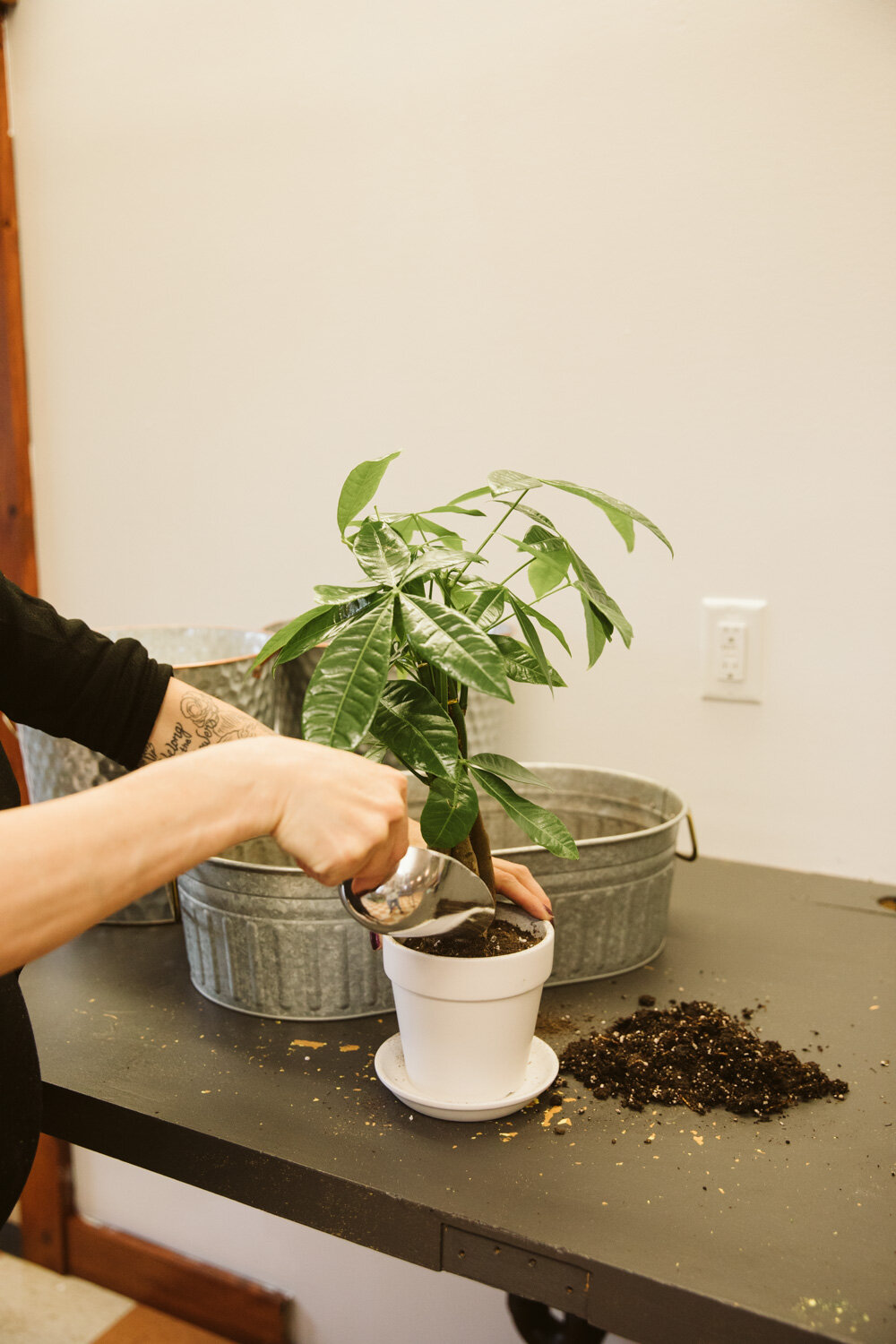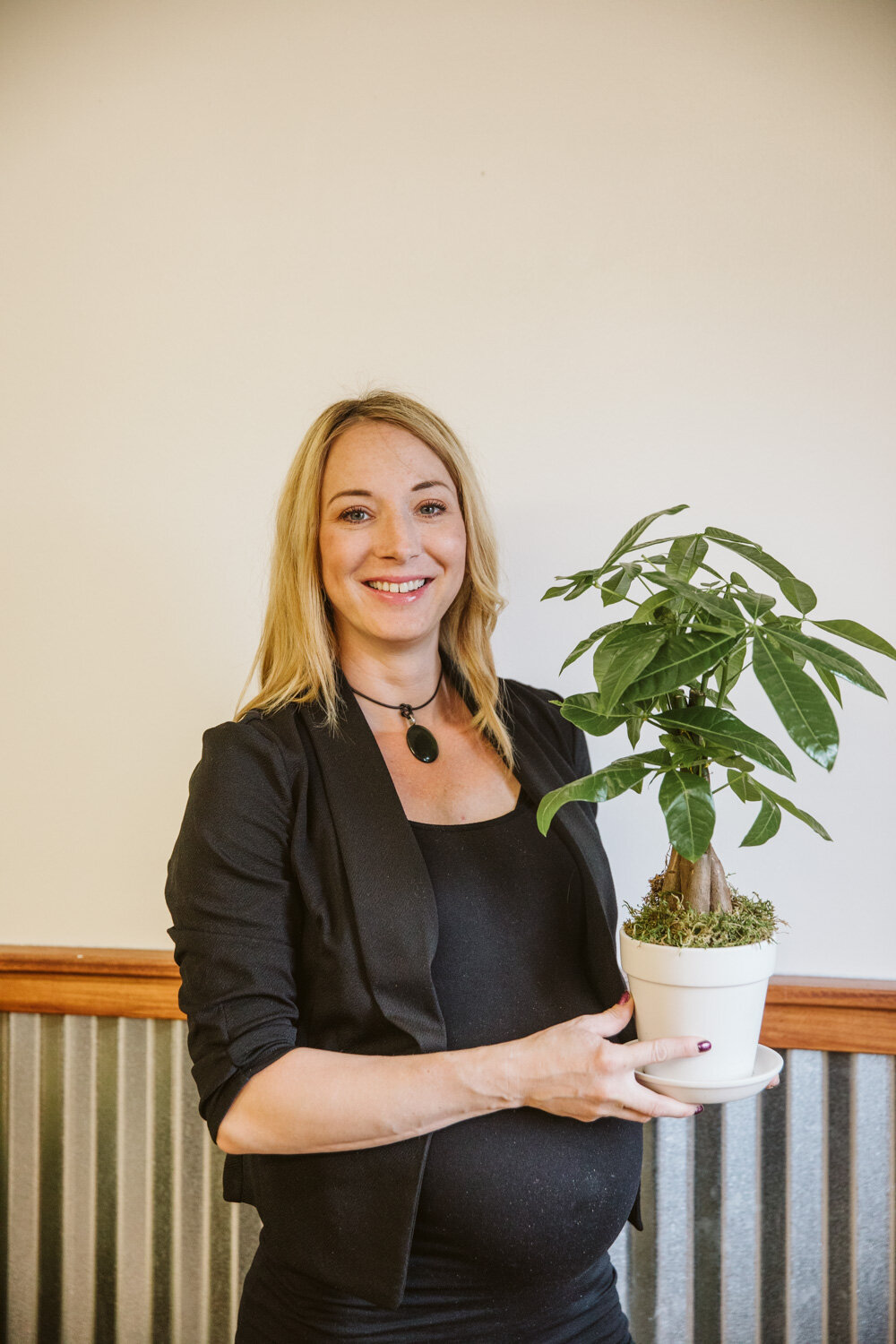Feature Friday: How to Repot your House Plants with Protea Floral Design
It seems to be a question I receive quite often, “When is the best time to repot my plants?” The best times to repot a plant is in the spring and summer, when it’s at peak growing season for plants. Fall also works, but it’s suggested that you give it a good month in its new pot before winter settles in. Why should you not repot your plants in the winter? Well, winter months your plants become dormant, but if they are over grown with roots coming out of the pots, you can definitely repot them. However, being mindful of your watering schedule is recommended. They grow least, sun is at its minimal and the chance of overwatering and causing root rot is at its highest point.
Did you just purchase your plant? If so, it’s a good idea to let your new plant friend acclimate to its new home before repotting. Place your new friend in the location and if possible within the new planter it will soon call home. By doing this, you’re allowing your plant to acclimate to its new environment before shocking it by making drastic changes right away. Plants thrive on microclimates so allowing it to get used to its new home prior to repotting is always a good idea.
Most people want to remove the plant from the “ugly” growers pot right away. There’s a few things to consider. Does the new planter have drainage? If not, you’re going to want to find a way to ensure your plant will have space for the roots. The goal when you’re repotting your plant is to make it as happy as possible. So, I always recommend adding charcoal to the pot prior to adding your plant. Remember, anywhere the roots are not, there is a chance for water to accumulate, so creating space for your roots to receive air in a planter without drainage is important. Your other option is to grab another growers pot and repot into there and then places it into the decorative pot. Why, you might ask? Well, this is an easy way to ensure the roots will receive proper drainage, air to the roots and incase of overwatering, you can easily remove the plant and dump the excess water. It also allows for easier watering in general. You can grab the plant out of its decorative pot, place into a sink or tub and water thoroughly until the water is coming out of the bottom of the pot. This also ensures that any additional salts from fertilizers are rinsed away, too. However, do what’s best for you and your ability to care for your new plant friend.
When it comes to repotting a plant there’s a few things you will need:A pot that is 1” to 2” bigger than the previous pot
Fresh soil for your plants needs
Some sort of drainage if your new planter doesn’t have any, like charcoal or lava rocks
Your new plant!
Optional: Moss or Rock for decorative finish. Rocks are used typically with arid/desert dwelling plants like cactus or succulents. Moss is typically topped with plants that love humidity.
Remove from PotFirst, I like to give it a good watering. I do this for a couple of reasons, it helps the plant come out of the old pot a little easier and it also hydrates the roots before being put into its new home. To remove the plant gently turn on its side and compress the sides of the pot and slowly wiggle and remove plant. If it is so root bound and not coming from the pot easily, you can carefully cut down the plastic growers pot or tug every so slightly on the base of the plant with the leaves in your hand.
Loose the Roots and Remove SoilUsing your fingers to wiggle through the root ball. This will allow the old soil to fall off naturally and give the roots the much need room for growth. If the roots are long and thread like, gently prune away. If your plant is so root bound that the roots are growing in a circle around themselves, do your best to unbind them and trim any unhealthy looking roots.
New SoilNever re-use old soil. The nutrients have been depleted from it and it will not help your plant thrive. This is where if you have a pot without drainages you will need to add charcoal or lava rocks to create drainage and space for your new plant friend’s roots. I start by placing a mix of charcoal (or lava rock) and soil into the bottom of the planter and pressing down slightly to pack it. It should be about 1”-2” deep depending on the pot size.
Add your new plant friendFill pot with fresh soil. Finally, top with rocks or moss if you choose it to have a decorative finish.
A Little About Protea Floral Design
We started making our way in December of 2018. Starting our humble journey, we were working from a 50sq ft studio in the woods, and by May we had already outgrown our space. With so many weddings in the books and daily deliveries coming in, we were in desperate need to get into a bigger space. By July, we found our new space in Hancock and it was just in time!
Protea is dedicated to creating beautifully unique bouquets for your visual enjoyment. We limit the use of filler flowers and choose to accent your bouquet with beautiful greens and blooms.
You can learn more about us or make an order by going to www.proteafloral.com!
- Bobbi

